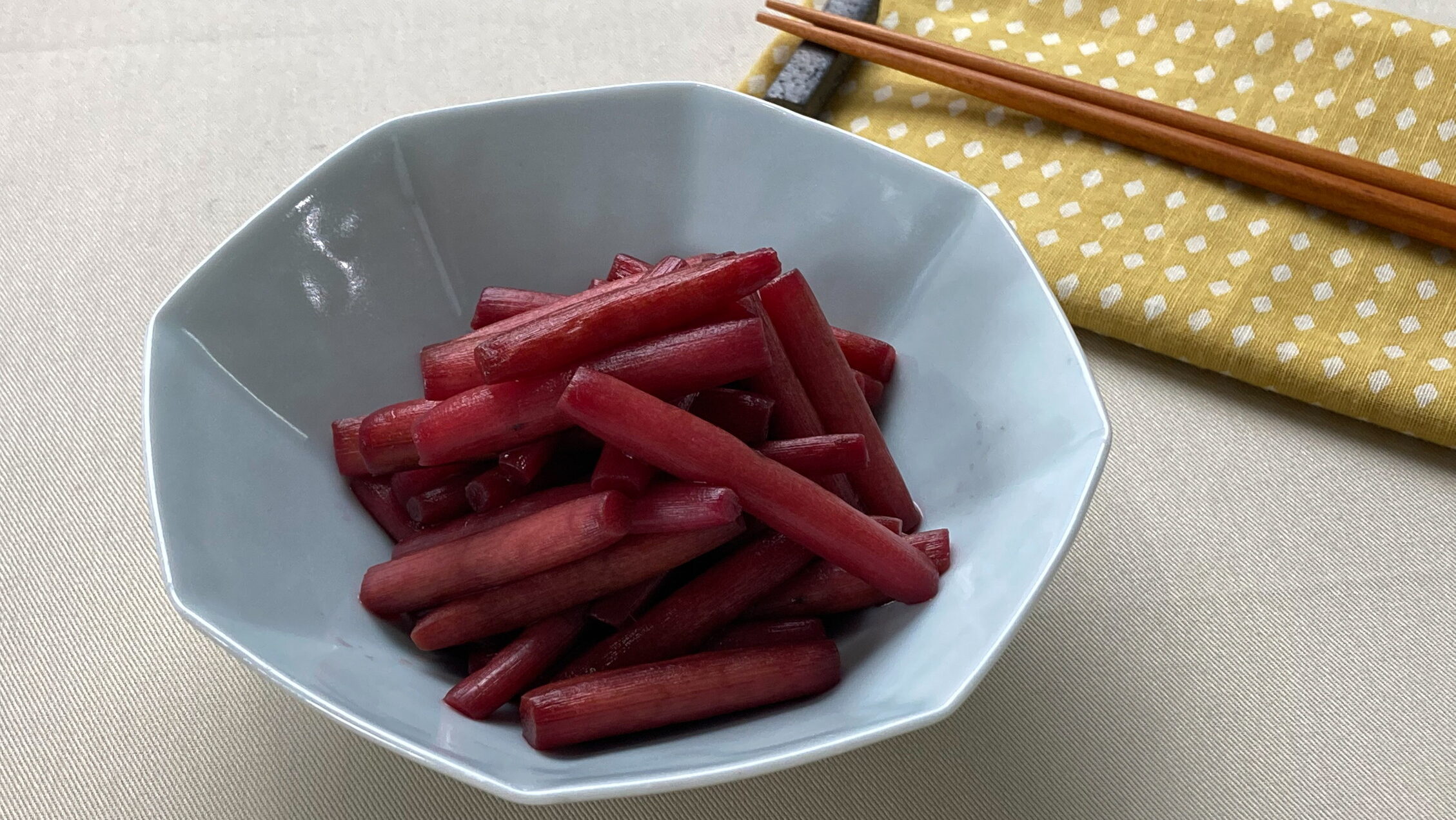
Hey there, let’s head over to Toyama Prefecture for a refreshing dish called “Suzuki”! Don’t let the name fool you – it’s not fish! This is all about “zuiki,” the stems of taro plants, pickled to perfection. It’s a simple, crunchy, and tangy side dish that’s been a staple in Toyama for generations. Let’s check it out!
Dish Name: Suzuki
- Region / Location: Toyama Prefecture (throughout the prefecture).
- Primary Area of Tradition: Throughout Toyama Prefecture.
- Main Ingredients: Zuiki (taro stem).
How It’s Eaten / Served
To prepare Suzuki, the zuiki is peeled, cut into roughly 4cm lengths, and soaked in water to remove any harshness. The soaked zuiki is then dry-fried in a pan until softened, after which vinegar is sprinkled over it. Once cooled, it’s mixed with a sweet vinegar dressing and chilled in the refrigerator. This makes for a refreshing and crisp side dish.
Cultural Background and Preservation
“Suzuki” is a pickled dish made from the stems of taro plants, known as “zuiki.” It’s a traditional pickled dish with a clean taste and crunchy texture that people have enjoyed for many years. There are different types of zuiki, including red zuiki (from varieties like Yatsugashira), white zuiki (grown in the shade), and blue zuiki (from Hasu-imo). However, when people simply say “zuiki,” they generally mean the red type. In the Hokuriku region, this dish is also called “Suko” in Fukui Prefecture. Using Yatsugashira taro stems is common, and pickling them in vinegar enhances their vibrant red color. It’s even said to help purify the blood, and in Toyama, it’s widely known as a food for postpartum women. While fresh zuiki dishes are made during the harvest season (summer to early autumn), zuiki is also dried for preservation. Dried zuiki is used in simmered and stir-fried dishes, and drying it not only extends its shelf life but also increases its nutritional value.
Since the harvest season for zuiki is from summer to early autumn, this dish frequently appears on the dinner table during that time. A great thing about it is that it keeps well in the refrigerator, so you can make a big batch and enjoy it as a staple side dish. It’s also served during events like the Bon Festival and autumn festivals, adding a touch of vibrant color to the occasion.
Suzuki is passed down as a “grandma’s recipe” in many households.
Additional information:
- Zuiki (ずいき): The edible stem of the taro plant.
- Yatsugashira (八つ頭): A variety of taro.
- Hasu-imo (蓮芋): A type of taro grown for its stems.
- Suko (すこ): The name for this dish in Fukui Prefecture.
- Bon Festival (お盆): A Japanese Buddhist custom to honor the spirits of one’s ancestors.
The information about regional cuisine featured on this website (Piggy's Grandma of Japan) is summarized and adapted from the Ministry of Agriculture, Forestry and Fisheries of Japan (MAFF) website, "Our Regional Cuisines"Additional commentary is provided based on the unique experiences and perspectives of the site's editors.
The copyright for the original content regarding regional cuisine belongs to the Ministry of Agriculture, Forestry and Fisheries of Japan.
The summaries and adaptations published on this site are intended for informational purposes only. Piggy's Grandma of Japan does not guarantee the accuracy or completeness of this information. For the most accurate and complete details, please refer to the original pages on the MAFF website.


